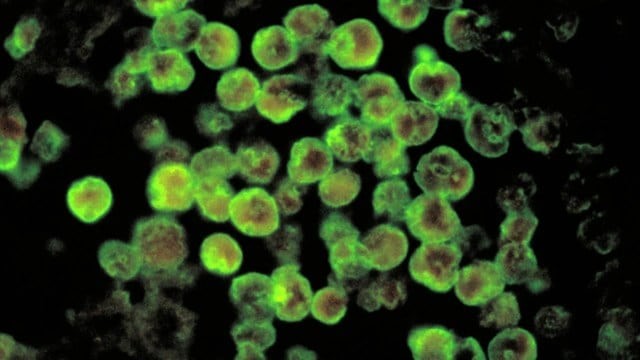Almond Cultivation in Kashmir

- 24 Aug 2025
In News:
The almond harvest in Kashmir is not only a vital agricultural activity but also a culturally significant seasonal event. This year’s bumper crop has brought relief and optimism to local farmers, reinforcing the economic and social importance of almond cultivation in the region.
About Almonds:
- Almonds are among the oldest and most widely cultivated tree nuts in the world, with two primary types: sweet almonds and bitter almonds.
- They are used extensively in culinary preparations, including sweets, almond milk, and as raw nuts, and are also processed for almond oil.
Climatic and Soil Requirements:
- Climate: Almond trees thrive in colder regions.
- Temperature: Optimal growth occurs between 7°C and 24°C.
- Soil: Deep, loamy, well-drained soils are ideal.
- Rainfall: Requires an average of 75–110 cm of rainfall.
- Altitude: Can grow effectively at 750–3200 meters above sea level.
Global and Indian Context:
- Major producing countries: USA, Australia, Spain, Turkey.
- In India: Almond cultivation is concentrated in hilly and colder regions, primarily in Jammu & Kashmir, Himachal Pradesh, Uttarakhand, with smaller cultivation in Kerala and some hilly areas of Andhra Pradesh.
Economic and Cultural Significance in Kashmir:
- Almond farming provides livelihoods to thousands of farmers in the region.
- The harvest season coincides with local festivals and traditional practices, reinforcing the crop’s cultural relevance.
- This year’s abundant yield has boosted local income and food security.
Primary Amoebic Meningoencephalitis (PAM)

- 24 Aug 2025
In News:
Kerala’s Kozhikode district has reported three recent cases of primary amoebic meningoencephalitis (PAM), including the death of a nine-year-old girl. A three-month-old infant and another child are currently receiving treatment. Following these incidents, the state health department has issued an alert to prevent further infections.
About Primary Amoebic Meningoencephalitis (PAM):
- Definition: PAM is a rare but severe infection of the brain and its protective membranes, caused by the free-living amoeba Naegleria fowleri, popularly called the “brain-eating amoeba.”
- Transmission: The amoeba thrives in warm, fresh water, soil, hot tubs, and improperly maintained swimming pools. Infection occurs when contaminated water enters the nose, allowing the pathogen to reach the brain and meninges. Dust or soil exposure can also serve as potential sources.
- Symptoms: Include headache, fever, nausea, vomiting, sore throat, hallucinations, and neurological deterioration. PAM progresses rapidly, often proving fatal within days.
- Treatment: Early diagnosis and administration of specific antibiotics can sometimes save lives, but recovery is rare. Globally, the disease has a 97% fatality rate, whereas Kerala has reduced it to 25% due to prompt medical interventions and protocols.
Other Amoebic Infections:
- Granulomatous Amebic Encephalitis (GAE): Caused by Acanthamoeba or Balamuthia mandrillaris, GAE progresses more slowly than PAM but is equally deadly if untreated. Unlike PAM, GAE does not necessarily require water exposure for infection.
Epidemiology in Kerala:
- The first PAM case in India was reported in 1971, and Kerala’s first case occurred in 2016. From 2016 to 2023, eight cases were confirmed in the state.
- Last year, Kerala recorded 36 positive cases with nine deaths, prompting the development of the state’s first standard operating procedure (SOP) for managing amoebic meningoencephalitis.
- Notably, in July 2024, a 14-year-old boy in Kozhikode became the first Indian to survive PAM, only the 11th survivor globally.
Factors Contributing to Recent Cases:
- Increased testing for acute encephalitis syndrome (AES).
- Environmental changes, including climate change and pollution.
- Greater awareness and proactive healthcare measures, leading to earlier detection and treatment.
Ionic Liquids

- 24 Aug 2025
In News:
Recent scientific research suggests that life could exist on rocky super-Earths with volcanic activity and minimal water, thanks to ionic liquids (ILs)—salts that remain liquid even in extreme conditions such as a vacuum.
About Ionic Liquids (ILs):
- ILs are salts that are liquid at room temperature, typically with melting points below 100°C.
- Unlike ordinary liquids composed of neutral molecules, ILs are made entirely of ions or short-lived ion pairs.
- Examples include tetrabutylammonium nitrite, 1-(Cyanomethyl)-3-methylimidazolium chloride, and choline acetate.
- ILs are also called liquid electrolytes, ionic melts, ionic fluids, fused salts, liquid salts, or ionic glasses.
Properties and Significance:
- Non-volatile and non-flammable, making them safe under extreme conditions.
- Thermally and chemically stable, resisting decomposition up to 200–400°C depending on composition.
- Can be hydrophobic or hydrophilic, and act as good conductors with a broad electrochemical range.
- Highly tunable: Their physico-chemical properties can be modified by changing the size and type of ions, making them versatile in applications.
Applications in Science and Industry:
- Widely used in synthesis, catalysis, extraction, electrochemistry, analytics, and biotechnology.
- Serve as environmentally friendly alternatives to conventional organic solvents and catalysts.
- Their stability under heat and vacuum conditions allows their use in high-temperature processes.
Role in Supporting Extraterrestrial Life:
- Laboratory experiments demonstrated that ILs can be created by mixing volcanic sulphuric acid with nitrogen-containing organic molecules found on planets.
- These liquids can dissolve biological molecules, offering a medium for biochemical reactions without the need for liquid water.
- This discovery expands the scope of habitable environments beyond Earth-like conditions, suggesting that life could potentially survive on arid, volcanic exoplanets.
SarvottamYudhSeva Medals
- 24 Aug 2025
In News:
On the eve of the 79th Independence Day, President DroupadiMurmu approved the awarding of seven SarvottamYudhSeva Medals (SYSM), the nation’s highest wartime distinguished service honour, to the leaders of Operation Sindoor, marking the first such awards since the Kargil War.
About the SarvottamYudhSeva Medal:
- Institution: 26 June 1980, to recognise distinguished service of the highest order during war, conflict, or hostilities.
- Eligibility: All ranks of the Army, Navy, Air Force, including Territorial Army Units, Auxiliary and Reserve Forces, and lawfully constituted Armed Forces when embodied. Nursing officers and members of the Nursing Services are also eligible. Awards can be given posthumously.
- Design: Circular medal, 35 mm in diameter, gold gilt, with the State Emblem and inscription “SARVOTTAM YUDH SEVA MEDAL” on the obverse, and a five-pointed star on the reverse. The ribbon is golden with a red vertical stripe in the centre. Subsequent awards are recognised by a Bar on the ribbon with a miniature insignia.
- Significance: Considered the wartime equivalent of the Param VishishtSeva Medal (PVSM) for exceptional service in peacetime. Previously awarded to three officers for Kargil War leadership: Lt Gen Amarjit Singh Kalkat, Air Marshal Vinod Patney, and Lt Gen Hari Mohan Khanna.
Escherichia coli
- 24 Aug 2025
In News:
Researchers have recently developed a method to transform genetically engineered Escherichia coli (E. coli) bacteria into self-powered chemical sensors capable of detecting mercury and directly interfacing with electronic devices. This breakthrough represents a significant advancement in environmental monitoring and bioengineering.
About Escherichia coli:
- E. coli is a rod-shaped bacterium belonging to the Enterobacteriaceae family, commonly found in the intestines of humans and animals.
- Most strains are harmless or beneficial, aiding digestion, but certain strains can cause illnesses such as diarrhea, urinary tract infections, respiratory issues, and pneumonia.
- Pathogenic strains, particularly Shiga toxin-producing E. coli (STEC), produce toxins that damage the intestinal lining, leading to symptoms such as fever, persistent diarrhea, bloody stools, and vomiting.
- Transmission occurs through contaminated food, water, or contact with fecal matter from infected individuals or animals.
- Most infections are self-limiting, and treatment primarily focuses on hydration and symptomatic care.
E. coli as a Mercury Sensor:
By leveraging synthetic biology, scientists have reprogrammed E. coli to detect trace amounts of mercury, a highly toxic heavy metal. These bacteria generate an electrical signal when they encounter mercury, allowing direct interfacing with electronic devices to provide real-time monitoring of environmental contamination.
Significance and Applications:
- Provides a low-cost, eco-friendly alternative to conventional mercury detection methods, which often rely on expensive and sophisticated instruments.
- Potential use in monitoring water bodies, industrial effluents, and soil for mercury pollution.
- Demonstrates the broader potential of bioengineered microorganisms in environmental sensing, medical diagnostics, and bio-electronic devices.
This development highlights the convergence of microbiology, synthetic biology, and electronics, paving the way for innovative solutions in pollution monitoring and environmental safety.
